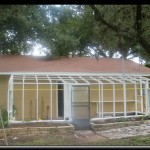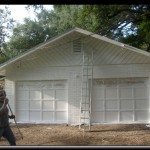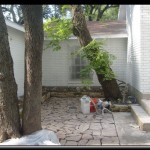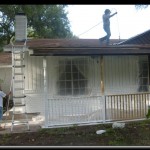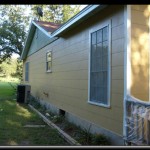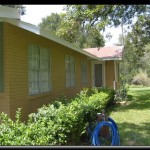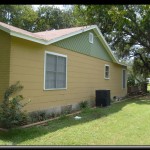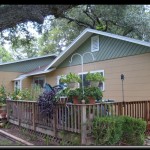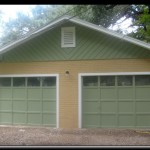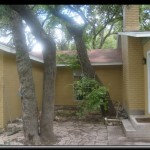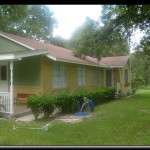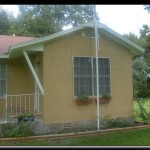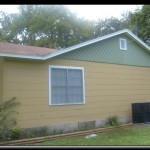Exterior House Paint Before and Pictures Windcrest TX
Exterior House Paint Before and Pictures Windcrest TX
Exterior House Paint Before and Pictures Windcrest TX – Antonio’s Paint & Drywall services Windcrest TX and Surrounding areas of San Antonio TX. For the best quality work at a great price, Antonio’s Paint is your one stop solution for your exterior and interior house panting needs.
Project your largest investment by keeping a fresh coat of paint on the interior and exterior walls. If you need indoor or outdoor painting service we provide the best quality materials and service in the Windcrest Area. Call other first then call the best in quality and price.
Below is an example home we painted right here in Windcrest. You can see the preparation work before during and after the painting process.
- Exterior House Painting Windcrest TX
- Exterior House Painting Windcrest TX
- Windcrest TX House Painter
- Exterior House Painting Windcrest TX
- Windcrest TX House Painter
- Windcrest TX House Painter
- Windcrest TX House Painter
- Windcrest TX House Painter
- Windcrest TX House Painter
- Windcrest TX House Painter
- Windcrest TX House Painter
- House Painting Windcrest TX – Painter
- House Painting Windcrest TX – Painter
- House Painting Windcrest TX – Painter
- House Painting Windcrest TX – Painter
- House Painting Windcrest TX – Painter
- House Painting Windcrest TX – Painter
- House Painting Windcrest TX – Painter
- House Painting Windcrest TX – Painter
- House Painting Windcrest TX – Painter
- House Painter Service Handy Man Windcrest
- House Painter Service Handy Man Windcrest
- House Painter Service Handy Man Windcrest
- Exterior House Painting Windcrest TX
- Exterior House Painting Windcrest TX
- Exterior House Painting Windcrest TX
- Exterior House Painting Windcrest TX
- Exterior House Painting Windcrest TX
- Exterior House Painting Windcrest TX
- Exterior House Painting Windcrest TX
- Exterior House Painting Windcrest TX
- Exterior House Painting Windcrest TX
- Exterior House Painting Windcrest TX
Painting Basics:
Step 1
A clean surface is essential for a good paint job. A pressure washer with the proper detergent is the most efficient means of thoroughly cleaning exterior siding. Use caution when selecting the nozzle – a concentrated stream can damage wood, seep under lapped siding and break windows. On surfaces that aren’t suffering from excessive peeling or flaking, a regular garden hose and scrub brush will work. Trisodium phosphate (TSP) is a good, safe cleaning agent. To remove and prevent mildew, use a detergent with mildewcide or a mixture of one quart household bleach in three quarts of water. Rinse the surface when cleaning is completed.
Step 2
Scrape away loose paint. Using a wire brush, scrape paint that’s flaking or located in areas that the washer didn’t reach. Scraping to the bare wood is not necessary if the old paint is intact. It can be painted over after sanding.
Step 3
Repair any surface flaws with a surface repair compound rated for exterior use. Sand the surface when dry.
Step 4
Remove old caulk. Re-caulk around door trim, windowsills and other areas that need to be sealed with a paintable exterior caulk.
Step 5
Repair and re-putty windows. Remove old putty and apply new glazing. Make sure it’s dry before painting.
Step 6
Use dropcloths to protect flowerbeds and lawns. Gently tie up and cover shrubs.
Step 7
Prime bare wood and any area where repairs have been made.
Basic prep tools and painting materials:
Garden hose
Scrub Brush
Wire Brush / Scraper
Bucket
Caulk
Window Glazing
Putty Knife
Exterior Spackling Compound
Sandpaper
Cleaning Agent
Prepping for paint:
Paint Primer
A primer will help paint adhere to the surface, providing a more uniform appearance. Use a primer when painting over new wood, bare wood, or repainting over existing bright or dark colors.
Primer Buying Guide
Getting Started
Complete exterior repair and preparation. See Prepare Your House for Exterior Painting.
Check the weather forecast before starting the job. Rain or high wind can cut a day of painting short and ruin what’s already been applied. Exterior latex is fast drying, but it still needs time to dry before it gets hit by rain. Oil-based paint definitely needs curing time; check the manufacturer’s recommendations. Paint when temperatures are above 50° and below 85°. Heavy rain or high humidity on a newly painted uncured surface can cause blistering.
Set the ladder up on flat ground.
Cover bushes, flowerbeds, decks and sidewalks with dropcloths. Tie back shrubs to prevent them from rubbing against fresh paint.
Avoid painting in direct sun. Paint the west-facing side in the morning and the east in the afternoon.
Paint Application
Paint the siding first. Start at the top, painting horizontally as you work your way down. Use a scaffold if possible, or move the ladder regularly. Over-reaching on a ladder is dangerous; plus the paint application will be uneven if you can’t see the lap marks well.
Paint the windows and trim next. Don’t close the windows completely after painting to prevent sticking. Leave a very small strip of paint around the edges of the windowpanes to seal out the weather.
Paint the foundation last.
Potential Issues
Sunlight and UV radiation. Sunlight and moisture can cause chalking and tint loss; however, latex paint tends to resist the effects of direct sunlight better than oil-based or alkyd paints.
Water and moisture. Wood expands and contracts due to changing moisture levels and can cause paint to crack and flake under this stress. Permeable or breathable latex paint allows water to vaporize and escape before damage can occur. Moisture can cause blistering, which leads to mildew growth. Paint additives keep mildew from forming but will not kill existing mildew.
Change in temperature. Superior adhesion and flexibility in paint helps prevent cracking and flaking caused by the expanding and/or contracting of the substrate (wood, plywood, or hardboard). Top quality acrylic latex paint is an excellent choice for areas with freeze/thaw cycles.
Siding
Aluminum and vinyl siding present special challenges when painted. Aluminum siding frequently suffers from excessive chalking and may contain dents and imperfections. Pressure wash or hand-scrub to remove chalk and rinse afterwards. Satin or low luster paint is the best choice for aluminum siding because it hides dents and makes the imperfections less noticeable. A spray application gives the best appearance. Vinyl siding has the same problems with one additional limitation. Vinyl siding has a tendency to buckle or warp irreversibly from hot, direct sunlight. Darker colors will absorb more heat, so select a paint color no darker than the original color of the original vinyl.
Paint Storage and Disposal
Clean paint from the rim of the can. Seal container lids tight by tapping with a hammer and a block of wood.
Store solvent-based paint cans upside down to prevent a skin from forming.
Avoid extreme heat or cold.
Disposal methods vary by community. Check your local environmental, health, and safety laws.
Always follow label instructions for additional storage information.




